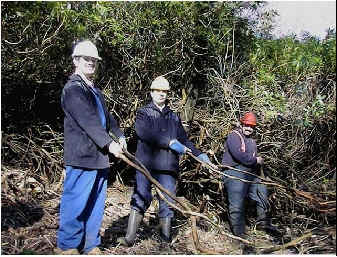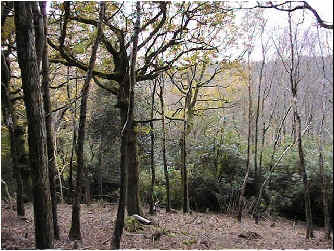Woodland Restoration Project
|
Clearing the project site. |
| Conclusions Vegetation on the project site prior to clearance consisted largely of rhododendron together with poorly developed silver birch. A few other tree species were found in low densities. In areas covered by rhododendron, the woodland floor was essentially bare of vegetation as a result of the extremely low light conditions prevailing. Light penetration in most areas was substantially less than 10% of full daylight. Removal of the rhododendron does result in an increase in biodiversity. The number of species in the area cleared of rhododendron two years previously in the pilot project, was nearly double that in areas still covered in rhododendron. Mosses are particularly notable in the early regeneration phase. However, the recolonisation and recovery process is likely to take a long time. Even though many more species were present in the cleared area, the woodland floor was still bare to a large extent and plant species were very sparsely distributed. The survey has shown quite marked differences in vegetation cover in different sections of the project site, despite an outwardly homogeneous appearance. The identification of these differences and their location, should later aid in understanding the patterns of regeneration across the site after removal of the rhododendron. Thanks are due to the Devon Recorder for Bryophytes, Mark Pool who assisted in the identification of the mosses. |
|
Part of the clearance completed. |
Appendix A Tree height measurement
Appendix B Random Sampling

